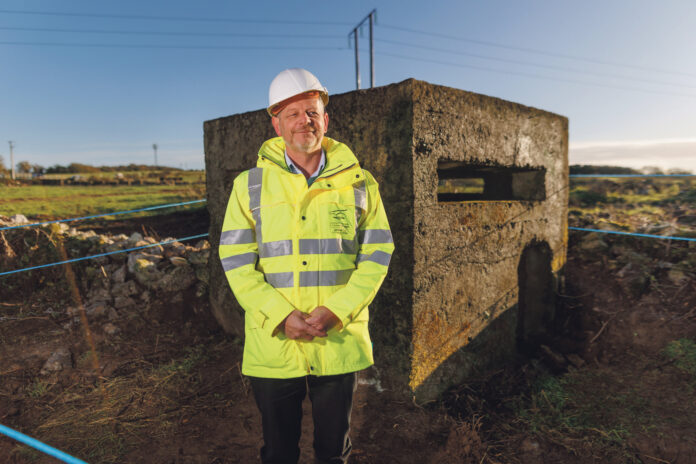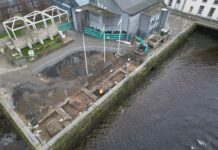
PREVIOUSLY unrecorded pillboxes dating back to World War II have been revealed by archaeologists working on the Foynes to Limerick Road Road Project, which encompasses the Adare Bypass.
A pillbox is a small structure made from reinforced concrete with openings (often referred to as embrasures or ‘gun loops’) that could be used to fire rifles or light machineguns through while giving some protection to the soldiers inside.
Tracing the origins of the artefacts, Bryn Coldrick, historian and senior consultant at AMS, explained that because Ireland was neutral during World War II, it took active measures to secure its independence.
“In important locations such as the Shannon Estuary, pillboxes were grouped to form a line of deep defences to contain any invasion for as long as possible and protect road and rail networks, both of which were essential for moving troops and equipment if faced with an attack emanating from the Shannon Estuary,” Mr Coldrick said.
In Ireland, around 300 pillboxes were built during the early years of World War II to help defend the country against a possible invasion.
Nine pillboxes are already listed on County Limerick’s Record of Protected Structures within the Adare-Rathkeale Municipal District. A further seven were found during fieldwork for the project’s environmental impact assessment report.
Another pillbox was found hidden in a field boundary when vegetation was being cleared and yet another possible example was identified from aerial photography.
“Comparing the locations of the known pillboxes with plans we uncovered in the military archives from 1940, it looks like there could be more out there waiting to be rediscovered, so it’s difficult to be sure about the exact number and locations of those still standing,” Mr Coldrick added.
Mayor John Moran deemed the find an important part of our local history and invited people to share family stories and personal experiences regarding the pillboxes with AMS so that the legacy of those aimed to defend us can live on.
According to Fintan Walsh, AMS senior archaeologist, two of the pillboxes within the scheme will be preserved in situ. Two more will be moved intact, after being fully recorded, with homes to relocate them to a local Limerick museum.
It is understood that the discovery of the pillboxes will not impact the progress of the Foynes to Limerick road.









